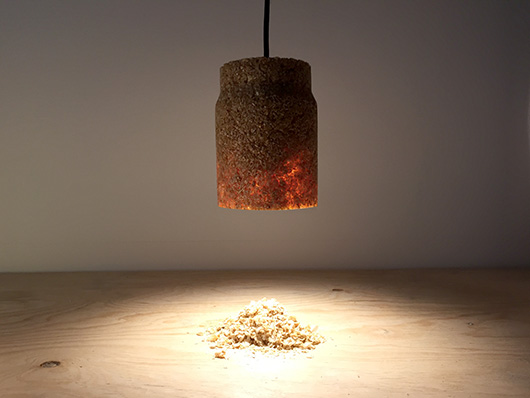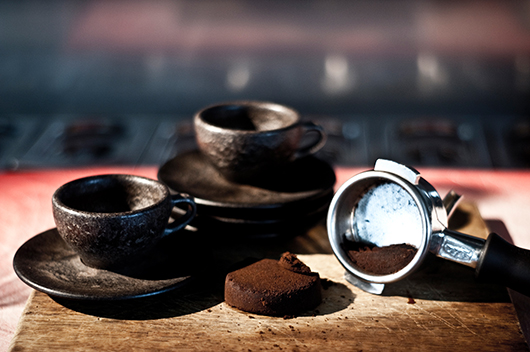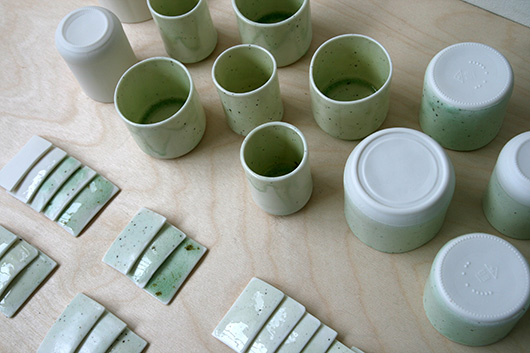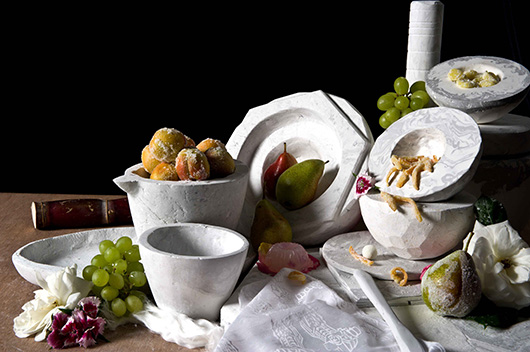Young designers showcase sustainable product ideas at the Ecostyle trade fair

Saving energy, conserving resources, upcycling: there are various approaches to developing sustainable products. As, indeed, is shown by 15 selected ‘Talents’ at Ecostyle in Frankfurt am Main. From 29 August to 1 September, the trade fair for sustainable consumer goods will be exhibiting products, which meet appropriately high demands in terms of ecology, design, functionality and social aspects.
 title="Más..." />
title="Más..." />
The fair will take place in parallel to the international consumer-goods fair, Tendence. With its promotional programme ‘Talents’, Messe Frankfurt offers young designers a platform on which to introduce themselves and their work in a professional and international context. Trade visitors, exhibitors and journalists alike will be taking advantage of the opportunity to talk to the creative newcomers early on. “These young talents make an extremely important creative contribution in the context of our international consumer-goods fairs. They alter our perspectives and show just what is possible,” says Nicolette Naumann, Vice President Ambiente/Tendence.
This year, too, what unites the Ecostyle Talents more than anything is the sustainable use of resources and experimentation with materials. The Swedish design studio Múk, consisting of Patrick Iu and Mattias Chrisander, for instance, manufactures lamps from the sawdust produced by a wood business nearby. Because of the varied nature of the wood waste, each lamp is unique and varies in terms of the quality of light it produces. Appropriately the name ‘Spån’ refers to the Swedish word for ‘sawdust’.
Laura Augustin and Paula Weise use sustainable bamboo fibres for their ‘Etagère+’ tableware set. A key feature of their work is that, thanks to a special stacking-cum-locking system, each of the elements - bowls, plates and mugs - can be combined with others to make individual cake stands. As a result, the two graduates from the Bauhaus University in Weimar have created an adaptable tableware set for a variety of occasions.
Saving electricity is the order of the day for Stephanie Hobmeier's design. A student in the Department of Product Design at the College of Art in Kassel, she has translated the old principle of energy-less retained-heat cooking into the present day. The process saves time, energy and water and cooks the food gently and kindly. As her raw material, Ms. Hobmeier uses cork waste, a by-product of cork manufacture.
And Ineke van der Werff, from the Netherlands, also picks up on a waste product. In her ‘Single Glass’ project she experiments with the use of glass gravel for glazes. Glass gravel is produced when glass objects are recycled but does not, however, lend itself to the manufacture of high-quality glass products. With her glazes, Ms. van der Werff, a graduate of the Hogeschool voor de Kunsten in Utrecht, gives her porcelain a rather special quality.

Ella Bulley has managed to create something quite individual and unexpected. An interdisciplinary designer and materials researcher, she has recently completed her Masters Degree in Material Futures at the Central Saint Martins School of Art and Design. In her ‘Saccharum’ project, she creates artefacts such as bowls and also accessories such as scarves and blankets.

Julian Lechner, who is studying design in Bozen and London and has worked for Stephen Burks and Werner Aisslinger, is also pursuing innovative ways of using materials. He has a formula for producing new products from old coffee. One example of the kind of things he makes are his light and durable coffee cups, that are reminiscent of marbled wood. An alternative to petroleum-based raw materials, ‘Kaffeeform’ (top image), as he calls it, uses increasingly available coffee waste as a resource.
Avoiding waste is also the aim of Felix Bahne's washing-up set ‘today’. As an alternative to washing-up equipment, which often comprises short-lived, disposable products, he has developed a washing-up brush with replaceable bristles. It is made from rice roots, a renewable, hard-wearing and biologically degradable raw material. The loofah sponge is also a purely vegetable-based product, which can be thrown on the compost heap or disposed of as bio-waste.
Although, in many industrialised countries, drinking water comes from the tap, it is often consumed in plastic bottles filled with spring water, which are clearly subject to a more energy-intensive manufacturing process. With ‘Tap It!’ Florian Giele and Max Kullmann are looking both to save energy and reduce waste. The two students from the Bauhaus University in Weimar have come up with an ingenious little helper: a folding card which fits into anyone's wallet or purse and can be used to fill drinking vessels, even when the sink is full or the tap is very low down.
Altogether, 59 young ‘Talents’ from 14 countries will be introducing themselves and their work at Ecostyle and in the ‘Carat’ and ‘Modern Crafts’ sections at Tendence in Frankfurt.
Information & images by courtesy of Messe Frankfurt Exhbition GmbH
Read more news related Ecostyle published at Infurma
News Infurma:
Online Magazine of the International Habitat Portal. Design, Contract, Interior Design, Furniture, Lighting and Decoration
